Are you new to the world of blogging? Are you looking for ways to Make Money From Blogging? If so, then this article has something in store for you! It is a complete guide on how to Make Money From Blogging, starting with setting up your WordPress site and ending with monetization. Let’s get started!
Part I. Understanding How the Concept Works
What is blogging?
Blogging is a web-based activity where people share their thoughts, experiences, and observations about anything that interests them. They use blogs as a way to communicate with a global audience.
Blogging is a great way to share your thoughts with the world. It’s also a great way to build a following of people who are interested in what you have to say. If you have a blog, you can also make money from it.
Make Money From Blogging
To Make Money From Blogging is not as difficult as it seems. The first step is understanding the concept and knowing what you are getting yourself into. For example, there are different types of blogs and different ways to monetize them.
The fact of the matter is that to Make Money From Blogging is a real and effective method. But there are multiple ways to go about it, and it’s not always a sure thing.
In order for you to succeed, you need to understand all of your options, weigh your risks and benefits, and research what’s out there so you can make a better decision on how you want your business model set up.
There are also many online resources that will give you helpful tips on how to start a blog and make money, including tutorials on how to do keyword research, find content ideas, or even start your own website with WordPress or Wix.
Part II. Getting Organized
Getting organized is one of the most important steps in blogging for beginners. The more organized you are, the more time you’ll have to write and promote posts.
Use a spreadsheet or a dashboard like Trello or Google Sheets to keep track of your posts and ideas, set deadlines for yourself, and map out blog post promotion strategies in advance.
A great tip if you’re looking to Make Money From Blogging is to pick a niche that’s both specific and popular.
For example, our niche – to Make Money From Blogging – has many readers who are eager to learn how they can start their own blogs (and earn passive income) too! Lastly, it’s important to know that the longer you blog, the easier it will be to figure out what type of content works best with your audience.
Keep these tips in mind when deciding how to start a blog and make money from it.
The most crucial first step is picking a topic for your blog – what are you passionate about? Once you have that down pat it’s time to come up with an overall look for the site.
We recommend considering color schemes, fonts, and other design details at this point so that when it comes time to actually launch the website, everything is ready to go in one shot.
Choosing a Niche
The first step in how to start blogging is choosing a niche. You should choose a niche that you are interested in and will have enough content for. It is important that you have a niche so that your blog has a focus.
You can find niches by doing some research or even just looking at what type of blogs are successful on the internet today. For example, if you love makeup, then starting a beauty blog would be perfect.

- Write about anything that captures your attention.
- Choose a topic about which you have some expertise.
- Find something profitable as well.
- Find something that other people are interested in, too
It is also possible to turn a hobby into an online business with how to start a blog as well. For example, if you love knitting then turning this hobby into an e-commerce shop could be profitable with how to start a blog.
Whatever the case may be, when thinking about what type of blog niche might work best for you it is important not to limit yourself and instead think creatively about ideas that might work well online.
Choosing a topic is one of the most important steps in how to start a blog because once you do, everything else will follow suit.
There are many ways to decide which topics to cover including picking something based on current events, personal interest, or expertise.
By knowing what kind of information people want and expect from a website or blog, you can provide them with all they need through your posts.
After determining the subject matter for how to start a blog there are two other major decisions that need to be made – who will contribute and how often they’ll post.
If you plan on handling all the writing duties, it’s crucial that you set aside time in advance so you’re able to publish consistently.
Choose a Blogging Platform
There are many different platforms available to start a blog, each with its own set of pros and cons. Below is a quick overview of the most popular platforms, with links to more in-depth reviews.
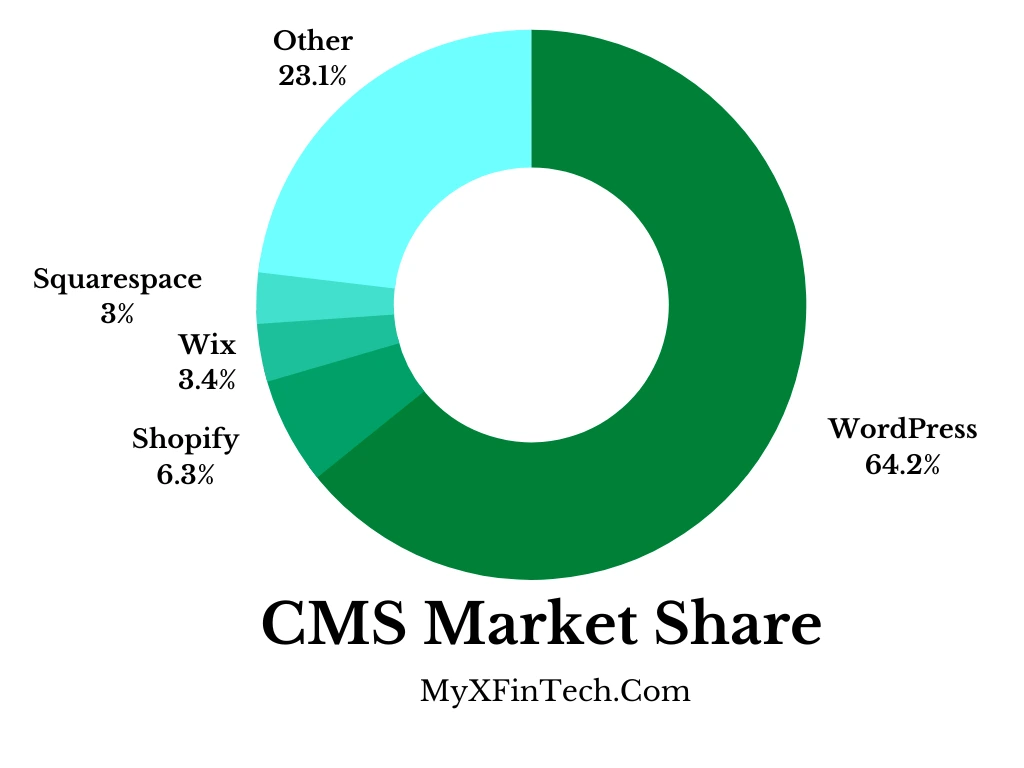
WordPress: One of the most popular and well-known blogging platforms, WordPress is available as a paid or free option. It is versatile and easy to use, making it a popular choice for new bloggers.
Shopify: One of the most popular blogging platforms it is a great platform because it is easy to use and it has a wide range of features.
It is perfect for small businesses and entrepreneurs who want to start and manage their own online store. It’s affordable, easy to use, and has a huge range of features.
You can add a custom domain name, create a custom logo, set up shipping and payment options, and more.
Wix: Wix is a website creation platform that allows users to create a website without having any coding experience. It’s free to use, and users can create a website in minutes.
Wix also has a wide range of templates available, so users can easily create a website that looks like the ones that are popular on the internet. However, Wix is not as popular as the other platforms, and it may not be as reliable.
Joomla!: Joomla is a popular open-source platform that offers a wide range of features and customization options. It is free to use, but some features, such as paid plugins, may require a fee. It is also difficult to find good, reliable support.
Drupal: Drupal is a popular platform for building more complex blogs. It is free to use but may require a membership to access some features. It is also difficult
Free of Cost Blogging Platforms?
It’s tempting for many newbie bloggers to create a blog on free hosted platforms like Blogger or Tumblr.
However, it is crucial to remember that “free” always have restrictions:
First, your blog name will be set as a subdomain (examples: “yourblog.blogspot.com” or “yourblog.tumblr.com“).
Second, you’ll be subject to their rules and restrictions.
Free choices are useful for checking out a blogging platform. However, if you’re serious about launching a blog, you’ll need to pay for full services and a custom domain name sooner or later.
Part III. Setting Up Your Site
Here we will take you through the process of how to start a blog. From the initial ideation, outlining the important elements of your site, deciding on a domain name and hosting location, creating your logo, and putting together content ideas.
Here for this blog purpose, we will go with the most popular CMS ( Content management system) that’s WordPress.
Purchase Web Hosting with a Domain Name
To create a blog using WordPress.org, you’ll need two things: a domain name and a web hosting provider.
The domain name
Regardless of the topic you pick, your domain name will be the name by which you will be recognized online. It is the Internet address for your blog.
You can check the domain availability here at the hosting 👇
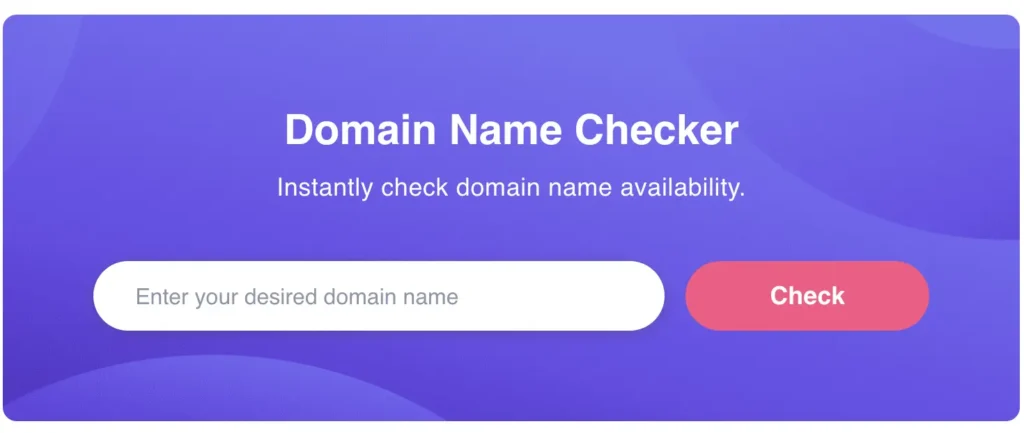
Search and Buy an Available Domain Name
Here are some things to think about while picking a blog name:
1) It should be brief and unique, as well as easy to say and type.
2) You may also combine first and last name combinations (e.g. johnsmith.com or Tim. blog).
3) Make it memorable and as close as possible to your blog name.
The common practice is to obtain a “.com” domain, however, other extensions can also be utilized. For instance, “.net” or “.blog.” Finally, it comes down to being memorable, therefore if a distinctive extension helps you stand out, then violate the rules!
Choose a Web Hosting
Choosing a trustworthy hosting service will be one of the most critical decisions you make after deciding on a domain name.
The functionality and speed of your blog will be heavily influenced by your hosting provider. The hosting guarantees that your blog is accessible to potential visitors 24 hours a day, seven days a week.
Web hosting is a service that allows you to publish a website and all of its files online so that others may view it.
Purchasing hosting implies purchasing server space from a hosting provider, which grants you access to the tools required to construct and manage a blog.
If you’re a beginning blogger, I recommend Hostinger hosting.
Here are some of the reasons why you should be confident in working with this company:
- Ease of use: With Hostinger, you can set up your blog with a few mouse clicks.
- Good value: You get dependable service with good customer service at a reasonable price.
- Free Domain: If you start your blog with Hostinger you get a domain name for free at least for one year
- Security: A free SSL certificate is offered and pre-installed to protect the data of your blog readers.Security: A free SSL certificate is offered and pre-installed to protect the data of your blog readers.
Choose your hosting plan
You will begin by selecting a hosting package. Hostinger provides 1-month, 12-month, 24-month, and 48-month plans.
You will pay less upfront with a 12-month plan, but if you are ready for a longer-term commitment, the 24- and 48-month packages will be a better value.
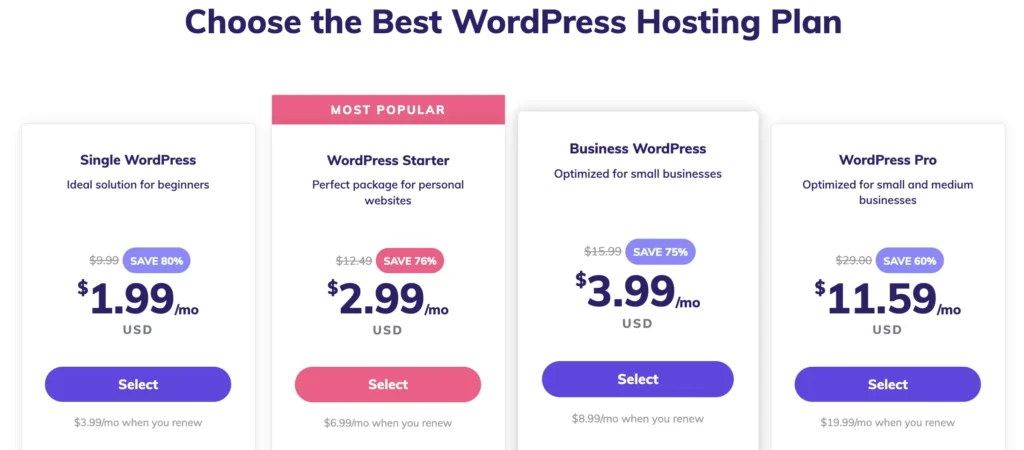
Sign up and confirm your payment details.
After you’ve decided on a hosting package, you’ll need to register and create an account. A valid email address is all that is required to open an account.
You may also use a Google, Facebook, or GitHub account that you already have.
Enter your payment details and press the red “Submit Secure Payment” button.
When your payment is finalized, Hostinger will send you a confirmation email.
You will also receive an email asking you to confirm your email address in order to activate your domain.
After that, you will create your Hostinger account. You’re one step closer to launching your blog!
After that, you will be prompted to set up your password, Enter your password and complete the account setup.
Installing WordPress and starting your Website
You can enter some basic information before starting your blog to provide the best user experience. If this is your first time establishing a blog, I recommend that you follow through with the instructions
To finish your domain registration, provide the website’s owner information. Include information such as your country, personal or company/organization information, and contact information.
Once you are done with all the setup click finish setup. Once you’ve completed these steps, the WordPress software will be installed and your blog structure will be built!
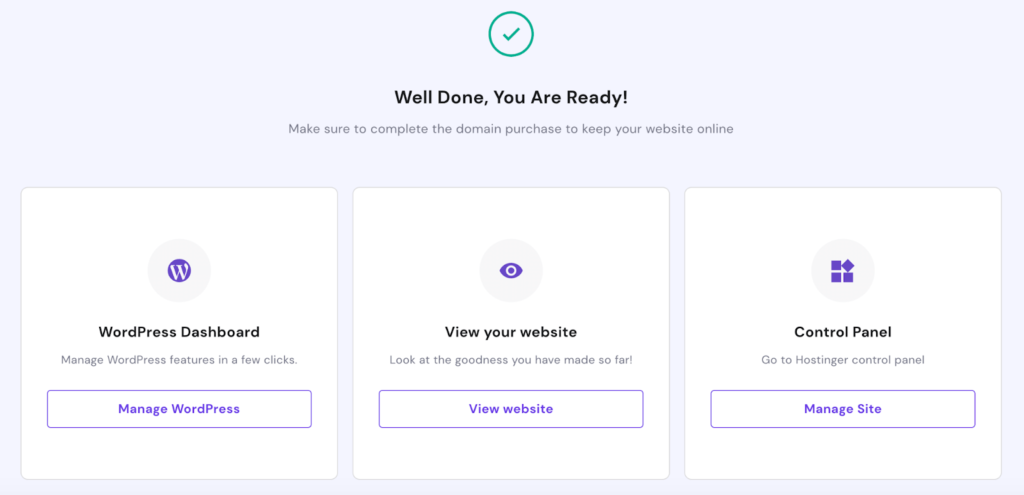
From here you can select to go to your Hostinger Control Panel or directly to your newly created website by clicking Manage WordPress.
I would suggest checking out the Control Panel First because it’s important that you get familiarised with the Control Panel and know which setting is where.
Once you are done familiarising yourself with the Control Panel click on Edit Website which will take you to the WordPress dashboard, here you can make all the changes and modifications to your newly created website.
Learning WordPress Step By Step
Once WordPress is installed, you can begin customizing your website’s look by picking a new template, and themes and adding new pages.
Choose a Theme
A WordPress theme defines the visual appearance of your WordPress site.
WordPress themes are professionally created templates that you may use to customize the look of your website.
Each WordPress site comes with a basic theme by default. If you go to your website, you’ll see a basic website. which is not very appealing to the eyes.
But don’t panic, you can install thousands of free and premium WordPress themes on your site.
The WordPress admin dashboard allows you to modify your theme. Navigate to the Appearance » Themes tab and select the ‘Add New‘ option.
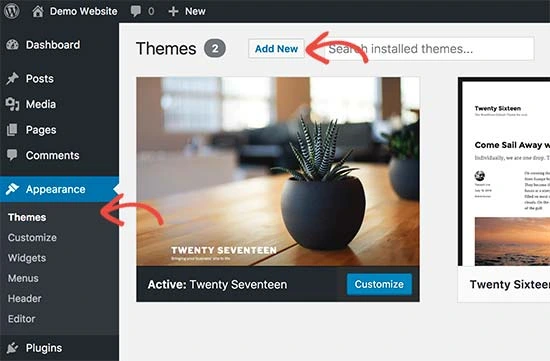
Once you click Add New On the next screen, you may search among the 31,000 free WordPress themes available in the WordPress.org themes directory.
You may arrange them by popular, latest, featured, and other criteria (i.e industry, layout, etc).
We’ll be using Astra for the sake of this guide. It is a well-known multi-purpose free WordPress theme with numerous design possibilities for various types of pre-build websites templet.
If you know the name of the free theme you wish to install, you may find it by typing it into the search box.
In search results, WordPress will display the theme. You must move your mouse over the theme and then click the Install option and then click on Activate.
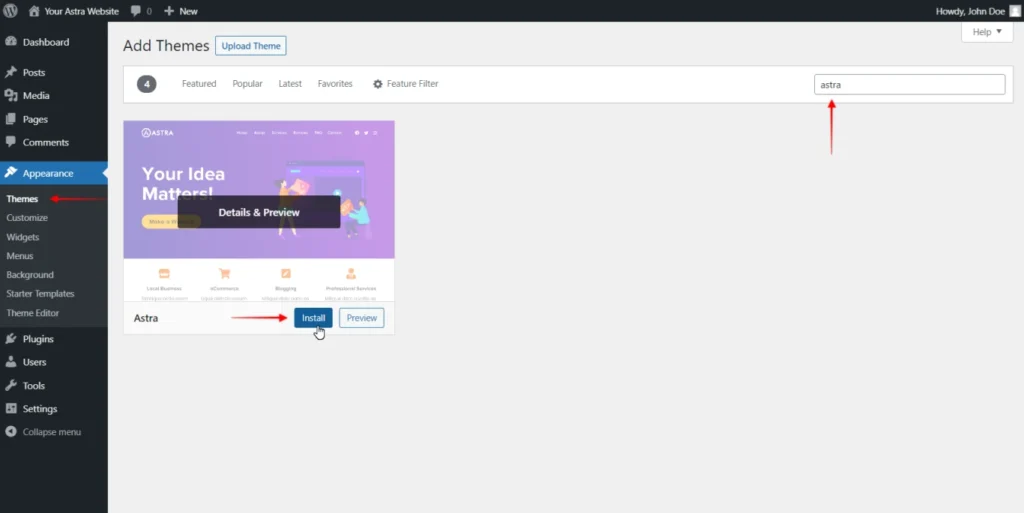
Install The Astra theme and its free related Starter Templates plugin to lay the groundwork for your blog.
Then to install the Starter Templates plugin click on Plugin then Add New and search for Starter Templates.
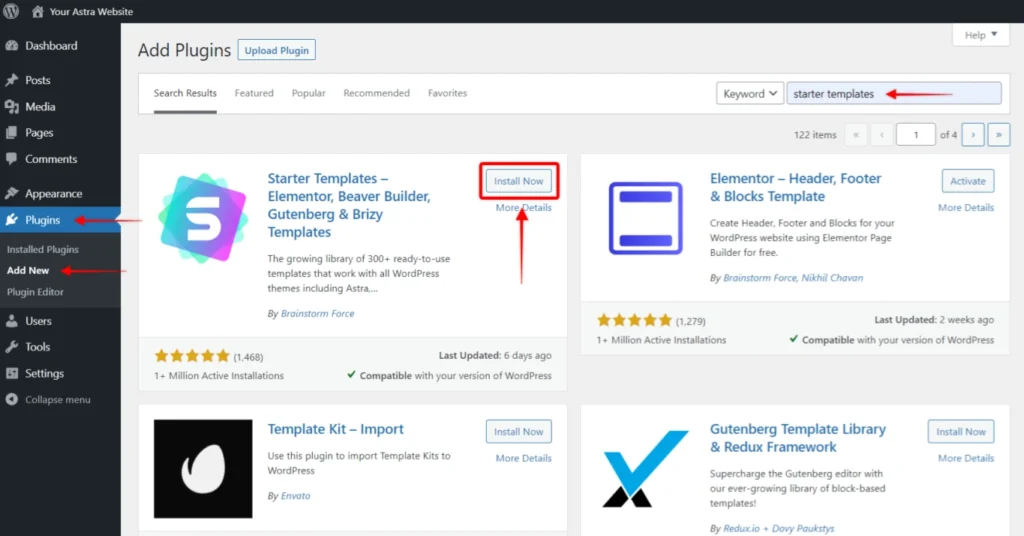
Import One Of The Starter Templates
You may now import your blog design after installing the Astra theme and the Astra Starter templates plugin.
In your WordPress dashboard, go to Appearance ➡️ Astra ➡️ Options Starter Templates.
Then, make sure you choose the Elementor page builder:
You’ll then see all of the Elementor templates that can be imported. Some Premium themes require the Astra Essential Bundle or Growth Bundle. If you don’t want to view these, go to the “Free” page instead.
To quickly preview any template, just click on it and it will show you the preview.
Click on a design that you prefer (we’re using the Coach starter site for this course). Then, on the live preview, select Import Site to begin the import process.
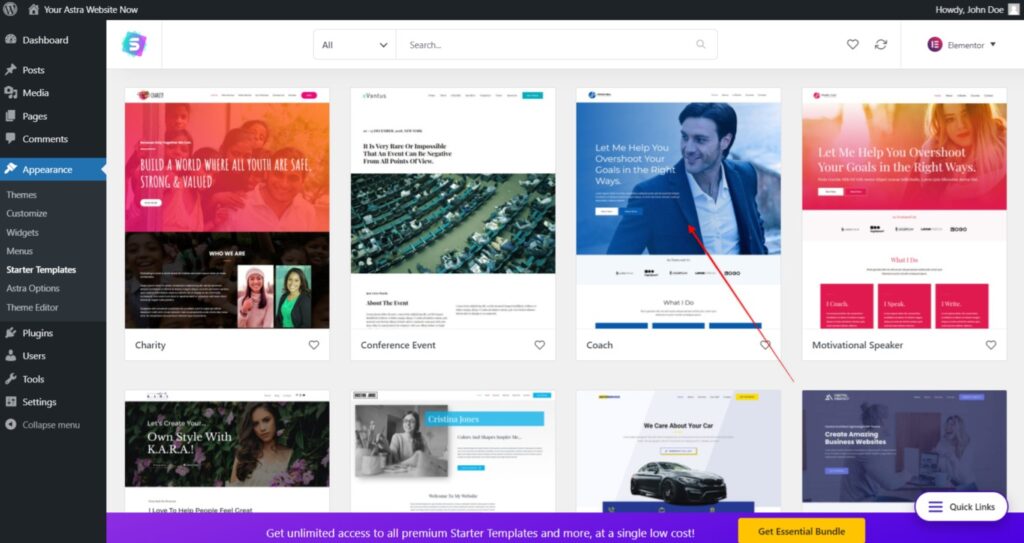
Once the process finishes, you can click the button again to view your site.
You can always use the Customizer controls in the next section to design your blog from scratch, The Starter Templates just save you time and provide you with a great-looking design immediately.
Using WordPress Customizer to Customize
After you’ve imported your example site, you’re ready to personalize your blog.
You may achieve this by utilizing the Astra theme’s comprehensive Customizer options. These allow you to control: without knowing any code:
- The colors you’ve chosen for your blog
- The appearance of your blog article layout
- What typefaces should you use on your blog?
- Much, much more
Go to Appearance ➡️ Customize on your WordPress dashboard to use the Customizer.
This section is similar to a sandbox in that no changes you make are visible until you click Publish. So go ahead and experiment and explore – you’ll see a live preview of each modification and you can’t break anything!
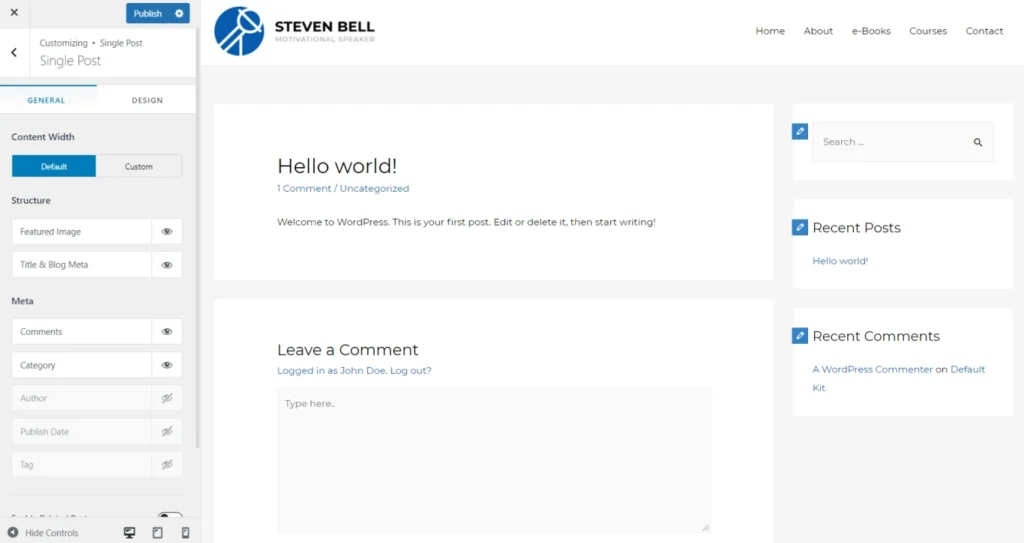
Some particularly interesting areas to investigate are:
- Colors & Background – This allows you to change the colors of different elements of your site.
- Layout enables you to manage the appearance of your blog’s content as well as other aspects of its layout.
- Typography enables you to change the typeface and font size for different portions of your blog.
Using Elementor to Customize Your Home Pages
Astra enables you to make various changes to the layout and design of your blog. However, the Elementor page builder is used to create all of your blog’s basic pages (homepage, about, etc.).
You may use the drag-and-drop Elementor interface to alter these pages. When modifying one of these pages, just select the Edit with Elementor option:

Once you are done with all the customization of our site then the next step is to keep adding content to your website.
Part IV. Creating Content For The Site
If you’re considering how to start a blog, know that it’s not as simple as sitting down and typing up your thoughts in the most interesting way possible.
You need a plan for what you want your site to look like and who you want to reach.
This plan starts with an idea for content and also includes your target audience, a niche, how often you’ll post, how much time you’ll spend on maintenance, and what kind of social media accounts you’ll use.
It’s also important to decide where or how you want the whether or not it will be private or public whether or not you have enough resources available at hand.
These are all factors when deciding how to Make Money From Blogging and should factor into the decision about which type of blog would work best for you.
WordPress has two basic content types: posts and pages. Posts are a feature of blogging and appear in reverse chronological order (newer items are displayed first).
Pages, on the other hand, are intended to be static “one-time” information, such as your about page, contact page, privacy policy, custom landing page, and so on.
WordPress displays your blog entries on the home page of your website by default. You may modify that and have WordPress display any static page as your website’s homepage (we’ll teach you how later in this article).
To display your most current postings, you may build a separate page for your blog or news section. You may also establish a website without a blog component at all.
Part V. Traffic Generation Techniques
If you’re looking for techniques on how to generate Traffic, here are some of the easiest ways to increase your site traffic.
Remember, there is no magic bullet and it will take time, but these tools and techniques should help your blog get off on the right foot.
Below, we’ll show you how to generate traffic from four different sources, using techniques you can start using today.
The traffic boosting tools are broken down into two categories: free and paid. For each one, we’ll give a detailed example of how it works so that you have a better idea of what you’re getting in return for your time and effort!
1. Obtaining organic search engine traffic
To increase organic traffic, you must discover how to get your content to rank higher in search results.
There is no secret strategy for ranking higher, however, you should pay attention to the following factors:
2. Search Engine Optimization (SEO) –
SEO is basically how search engines rank content. Simply put, your site won’t appear on Google or other search engines unless it’s been properly optimized so that it appears at a high ranking when people look for relevant terms.
When done properly, these keywords will help others find your content through a search engine when they’re looking for something like what you offer.
3. Guest Posting
Asking another blogger to write about your blog on their website for either social media or blogging purposes is called guest posting.
In exchange for posting the link back to your post, you agree not only to allow them the opportunity to talk about their experience with you and share their valuable insights with their followers but also agree that once they publish it they will provide a link back to your post as well. It’s a win-win situation!
So let’s go over how you do this. First, reach out to bloggers in your niche who already have an established audience and ask if they would be interested in doing a guest post.
From there, just lay out the ground rules of how you want this agreement set up.
We recommend including things such as asking if they’re willing to link back to your blog (you should make it clear where on their site), how long they need to wait before publishing the post after being published on yours, and any restrictions around word count or content length.
You might even consider agreeing not to discuss any sensitive topics that may be too controversial for your blog audience; everyone has limits, after all!
4. Internet marketing (paid traffic)
Appropriate and well-informed paid media use can help you get attention and recognition before organic (naturally created) traffic takes hold.
Paid traffic options include:
- Social media advertising on Facebook, Instagram, Twitter, and other platforms.
- Google Ads and Bing Ads are two examples of search engine advertising.
- Platforms for content discovery, such as Outbrain and Taboola.
Remember, there are always alternative ways to market your new blog.
Part VI. 4 Ways to Make Money From Blogging

Getting a blog going is the easy part. Getting money from it? Now that takes some effort. Thankfully, there are many ways you can monetize your blog without compromising quality and originality.
The first step is finding out how you want to make money, or how to Make Money From BloggingFor most bloggers, this means placing ads on their blogs through Google Adsense or another platform.
When visitors click on these links and make purchases on the linked site, they get a commission from that company for any items sold in their account.
The more popular your blog becomes and the better content you post, the more likely companies will want to place ads with you as well! Remember, this isn’t a get-rich-quick scheme.
It will take time to develop traffic and find advertisers interested in working with you. But as long as you keep at it and put in the work every day, eventually, you’ll find success!
Displaying advertisements on your website
There are several ways for you to host advertisements on your blog. Regardless of your expertise, you may choose advertising that is related to what you’re writing about or ads that just better fulfill the needs of your advertiser.
Some of the most common options for blog advertisements include Google Adsense, Mediavine, and Adthrive.
Participating in affiliate programs
Affiliate programs allow you to collaborate with businesses to advertise their items while earning a percentage on successful sales.
Consider the following before signing up for affiliate programs:
- The number of affiliate sales you make will be heavily influenced by the number of visits you have.
- You must be trustworthy enough for your visitors to click on your links.
- You could wish to include a disclaimer on your Terms of Service page indicating you do use affiliate links.
If you want to get started, there are a few famous web platforms that provide affiliate programs, such as Amazon Associates, ShareASale, and ClickBank.
Selling your products and services
If you are creative and enterprising, you may want to try utilizing your blog to sell your own products and services.
This is a possibility, particularly as your blog’s viewership, authority, and popularity develop.
There are WordPress plugins, such as the, that you can easily integrate into a blog and start using to sell products online.
Offering sponsored articles space
Advertisers are always seeking new methods to reach their target audience and are prepared to pay you to include a sponsored article on your site.
These postings typically promote advertising products or services and are an excellent method to monetize your site.
In the future, if you can construct a popular blog and establish yourself as an expert in your field, marketers may approach you to publish their content.
